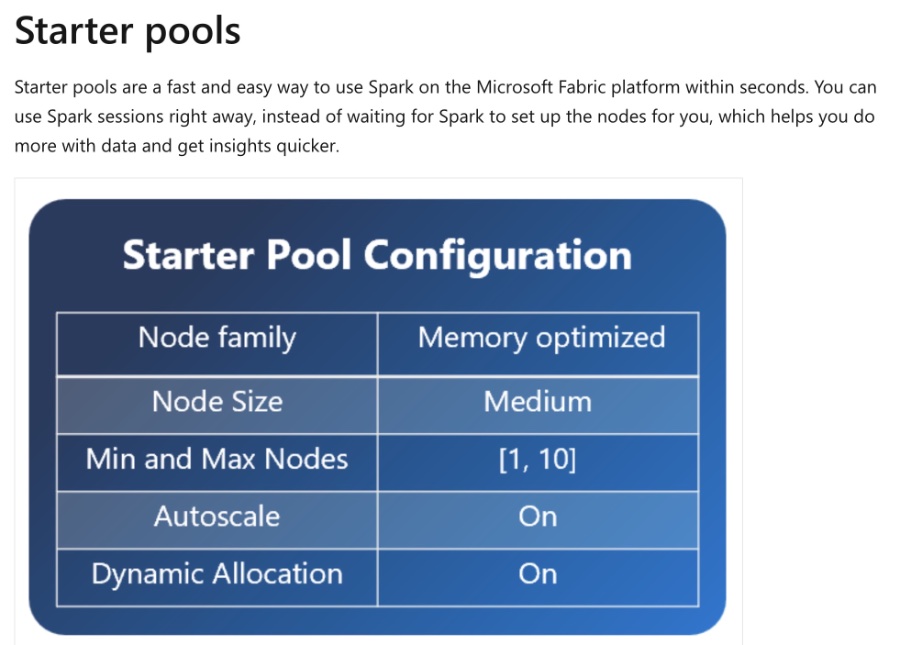Improve Azure VM Performance with Fabric Spark Compute
Exploring Fabric Spark vs Synapse Spark: Performance Boost with Azure VMs
Key insights
- Fabric Spark, a distributed data processing platform, uses Azure VMs to enhance performance and scalability.
- Discussion includes a comparison with Synapse Spark, focusing on architecture, features, and pricing differences.
- The episode is hosted by Guy and Estera, who delve into the impact of Azure VMs on performance.
- High performance and scalability are key benefits of using Azure VMs for data processing with Fabric Spark.
- Fabric Spark leverages the cloud's power to provide a cost-effective solution in terms of pricing compared to Synapse Spark.
Exploring the Power of Azure VMs in Data Processing
Azure Virtual Machines (VMs) stand at the forefront of cloud computing, offering scalable, flexible, and cost-effective solutions for data processing. The integration of Azure VMs with platforms like Fabric Spark showcases a tremendous leap towards achieving unparalleled performance and scalability in distributed data processing. As discussed by experts, this combination not only enhances the efficiency of data analysis tasks but also presents a competitive edge in terms of architecture and pricing against other platforms such as Synapse Spark. The importance of Azure VMs in powering these platforms cannot be overstated, as they provide the necessary computational resources to handle vast datasets effectively. By leveraging the cloud, organizations can achieve high levels of data processing performance without the hefty investment in physical infrastructure. This capability opens up new possibilities for businesses to harness the power of big data and analytics, driving insights and value from their data like never before.

In this episode, Guy and Estera delve into the powerful Fabric Spark data processing platform, focusing on how it utilizes Azure VMs to enhance its performance and scalability. They embark on a comparative analysis with Synapse Spark, breaking down the nuances in architecture, features, and pricing. The discussion aims to provide insights into the advantages of Fabric Spark in handling large-scale data operations.
Fabric Spark and Synapse Spark are both pivotal in the landscape of big data analytics, yet they offer unique propositions to users. By leveraging Azure Virtual Machines, Fabric Spark optimizes its distributed data processing capabilities, aiming for peak performance. Guy and Estera explore how these optimizations contribute to the efficiency and scalability of data operations, making Fabric Spark a compelling option for enterprises seeking robust data analytics solutions.
The conversation further explores the architectural differences between Fabric Spark and Synapse Spark, shedding light on how each platform is designed to meet specific user needs. This detailed comparison extends to the features offered by both platforms, providing potential users with a clear understanding of what sets them apart. Pricing also takes center stage as an important factor influencing the choice between these two powerful solutions.
Throughout this episode, the emphasis on Azure VMs as a cornerstone for the high-level performance of Fabric Spark is evident. Guy and Estera's analysis underscores the importance of choosing the right compute solution to meet the demands of large-scale data processing tasks. This exploration offers valuable insights for businesses and tech professionals navigating the complex terrain of big data analytics platforms.
Understanding the Impact of Azure Virtual Machines on Data Processing
The integration of Azure Virtual Machines into data processing platforms like Fabric Spark signifies a transformative approach to handling big data. These VMs provide the necessary infrastructure to support the extensive compute requirements of large datasets, enabling platforms to process and analyze data at an unprecedented scale. This innovative use of virtual machines not only bolsters performance but also ensures scalability, making it possible for enterprises to expand their data operations without compromising on speed or efficiency.
The distinction between Fabric Spark and Synapse Spark, as discussed by Guy and Estera, highlights the diverse ecosystem of data analytics tools available in the Azure cloud environment. It showcases how different solutions can be tailored to meet the specific needs of businesses, whether they prioritize architecture flexibility, unique features, or cost-effectiveness. By comparing these platforms, users are better equipped to make informed decisions that align with their strategic goals.
As businesses continue to grapple with the challenges of big data, the role of efficient compute solutions becomes increasingly crucial. The insights provided in this episode offer a glimpse into how Azure VMs are driving advancements in data processing technologies. As these technologies evolve, they promise to unlock new possibilities for data insights and intelligence, reinforcing the value of informed platform selection in achieving competitive advantage.
In conclusion, the discussion between Guy and Estera on Fabric Spark and Synapse Spark offers a comprehensive overview of how Azure Virtual Machines play a pivotal role in optimizing data processing platforms for performance and scalability. This comparison not only illuminates the key differences between these solutions but also serves as a guide for users navigating the complex landscape of cloud-based data analytics.

## Questions and Answers about Azure/Azure Analytics
Keywords
Azure VM performance, Fabric Spark Compute, Azure Virtual Machines, Compute Capabilities Impact, Performance Optimization Azure, Azure VM Fabric Spark, Scalability Azure Virtual Machines, Enhanced Compute Performance Azure
